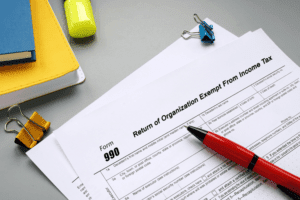
For those looking to dive deeper into how these assets contribute to profitability, understanding Return on Assets (ROA) can provide valuable insights into the company’s overall financial performance. Companies with cyclical sales may have low ratios in slow periods, so the ratio should be analyzed over several periods. Additionally, management may outsource production to reduce reliance on assets and improve its FAT ratio, while still struggling to maintain stable cash flows and other business fundamentals. The Fixed Asset Turnover Ratio (FAT) is found by dividing net sales by the average balance of fixed assets. There is no single number that represents a good total asset turnover ratio, because each industry has different business models. It also depends on the ratio of labor costs to capital required, i.e. whether the process is labor intensive or capital intensive.
Factors that Influence the Fixed Asset Turnover Ratio
This is useful in industries where companies have large amounts of bookkeeping expensive machinery that sits idle for most of the year. Using average assets gives a better estimate of how effective they are at producing revenue. Efficiency ratios can be affected by accounting policies and practices, which may vary between companies and industries. This variability can make it difficult to compare efficiency ratios across different entities accurately.
Steps To Calculate
- Also, compare and determine which company is more efficient in using its fixed assets.
- The Asset Turnover Ratio measures how efficiently a company uses its assets to generate revenue.
- For instance, an inventory turnover of 8 times a year means inventory is sold and restocked approximately every 45 days.
- Efficiency ratios are crucial accounting metrics that measure how effectively a company utilizes its resources to generate income.
- Therefore, there is minimal value in comparing the ratio of firms in sectors that are vastly distinct.
- The ratio calculates the company’s net sales as a percentage of its average total assets to show how many sales are generated from each dollar of the company’s assets.
- The current ratio is calculated by dividing assets on hand by liabilities incurred.
This number may lead to improvements in the layout of the restaurant and the use of the available space. It may help identify ways to expand seating or the need to replace bulky or underused equipment. For example, a restaurant may find that it is spending 20% of its total food costs on buying the ingredients for hamburgers, even though only 5% of its sales are of hamburgers.
What is the overall significance of efficiency ratios in resource utilization?
It indicates how much revenue your business is generating for every dollar invested in total assets. Overall, the asset turnover ratio is a useful tool for understanding a company’s financial performance and for identifying potential opportunities or risks. It’s also worth noting that the asset turnover ratio can provide bad information without additional context. For example, a company investing heavily in anticipation of rapid growth in the future may exhibit a drop in asset turnover. Likewise, a company that liquidates assets in anticipation of a slowdown in revenue would exhibit a spike asset turnover ratio in asset turnover. That’s why it’s important to compare asset turnover between companies in the same industry.

Conversely, a lower Inventory Turnover Ratio may signal overstocking, obsolescence, or weak sales, which can tie up capital and increase storage costs. Companies often strive to maintain an optimal turnover ratio to balance having enough inventory to meet customer demand without incurring excessive holding costs. This balance is vital for maintaining liquidity and ensuring that resources are not unnecessarily tied up in unsold stock. Note that while it’s possible to game the ratio, such as by selling off assets to prepare for declining growth, this only makes a company’s efficiency look good on paper. However, acceptable ratios will vary across industries, and correspond to your business’s operating environment and size. For example, a construction business requires far more significant assets—consider all the expensive machinery needed—than a service-oriented business, like an accounting firm.
Operating Assumptions

Sticking with the example above, we’ve calculated a 25% asset turnover ratio. What that means, exactly, is that the company’s assets generated 25% of net sales over the course of the year. In other words, every $1 in assets that the company owns generated $0.25 in net sales revenue. Again, this can be helpful when using various business valuation methods and trying to determine whether an investment fits your overall strategy. Investors can look at the asset turnover ratio when evaluating the risk of investing in a company, or when comparing similar companies to one another. Each industry has different norms for asset turnover ratios, so it’s best to only compare companies within the same sector.

Company A reported beginning total assets of $199,500 and ending total assets of $199,203. The asset turnover ratio is a key component of DuPont analysis, a system that the DuPont Corporation began in the 1920s to Accounting Security evaluate performance across corporate divisions. The first step of DuPont analysis breaks down return on equity (ROE) into three components, including asset turnover, profit margin, and financial leverage.
Asset turnover ratios are a measure of how effectively the company is using its assets to generate revenue. It shows how many dollars in sales are generated for each dollar of assets invested in the business. The asset turnover ratio is also crucial, as it reflects how well a company uses its assets to generate revenue. A higher asset turnover ratio indicates that the company is effectively utilizing its assets to produce sales, while a lower ratio may suggest underutilization or inefficiencies.
- The interest coverage ratio determines how well a company can cover the interest it owes for a period.
- This simply means that whether a company’s asset turnover ratio is considered good or poor would depend on its industry as well as the value of the asset turnover from the company’s previous records.
- The asset turnover ratio is a measure of how efficiently a company uses its assets to generate sales.
- Although having cash on hand is important for growing and maintaining a business, other types of business assets are also important, as is how a company chooses to use them.
Knowing how to calculate asset turnover and how to use it to identify companies with competitive advantages can help uncover good investment opportunities. At its core, asset turnover is a measure of how well management does at efficiently using its capital. Calculating the asset turnover ratio for a single company at a single point in time isn’t very useful. The metric is most useful when compared to competing companies in the industry or when tracked over time. This provides a reliable measure of the company’s average investment in non-current assets throughout that timeframe.

